La Tallera restores "original public art spirit" of Mexican muralist says Frida Escobedo
Frida Escobedo describes her first public project La Tallera, an art gallery which was once the studio of the late muralist David Alfaros Siqueiros, in this exclusive video interview with Dezeen.
The gallery complex, which is located in the small city of Cuernavaca, Mexico, was originally built by Siqueiros in the 1960s as a painting workshop.
Frida Escobedo's Mexico City-based studio redesigned the complex in response to a competition brief, which invited a selection of architects to transform the pre-existing site into an exhibition space with a cafeteria, bookshop and reading room.
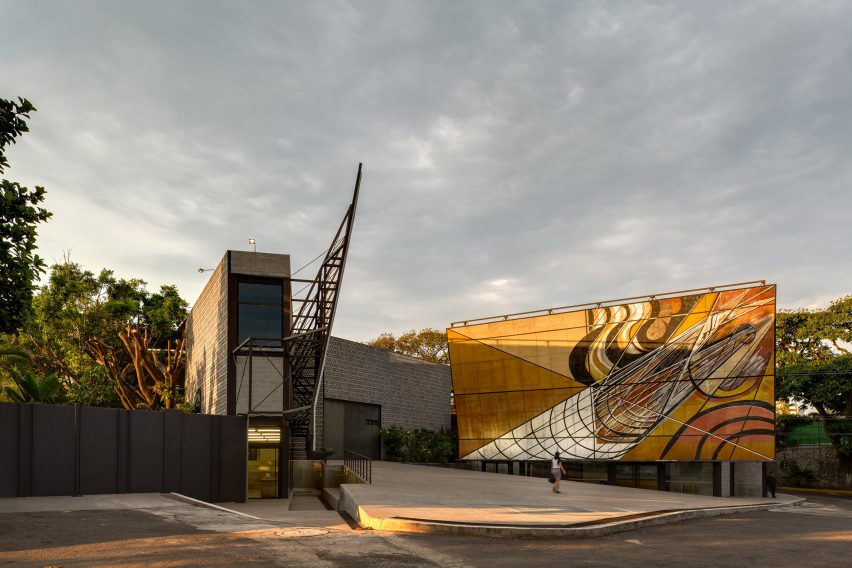
"The first thing that struck me was the courtyard where David Alfaro Siqueiros was painting his murals," she told Dezeen of her winning proposal. "It was really interesting to see how these monumental public art pieces were inside the building."
By knocking down an old perimeter wall and joining the internal courtyard to an external plaza, Escobedo opened up the complex and restored two gigantic murals to what she calls their "original public art spirit".
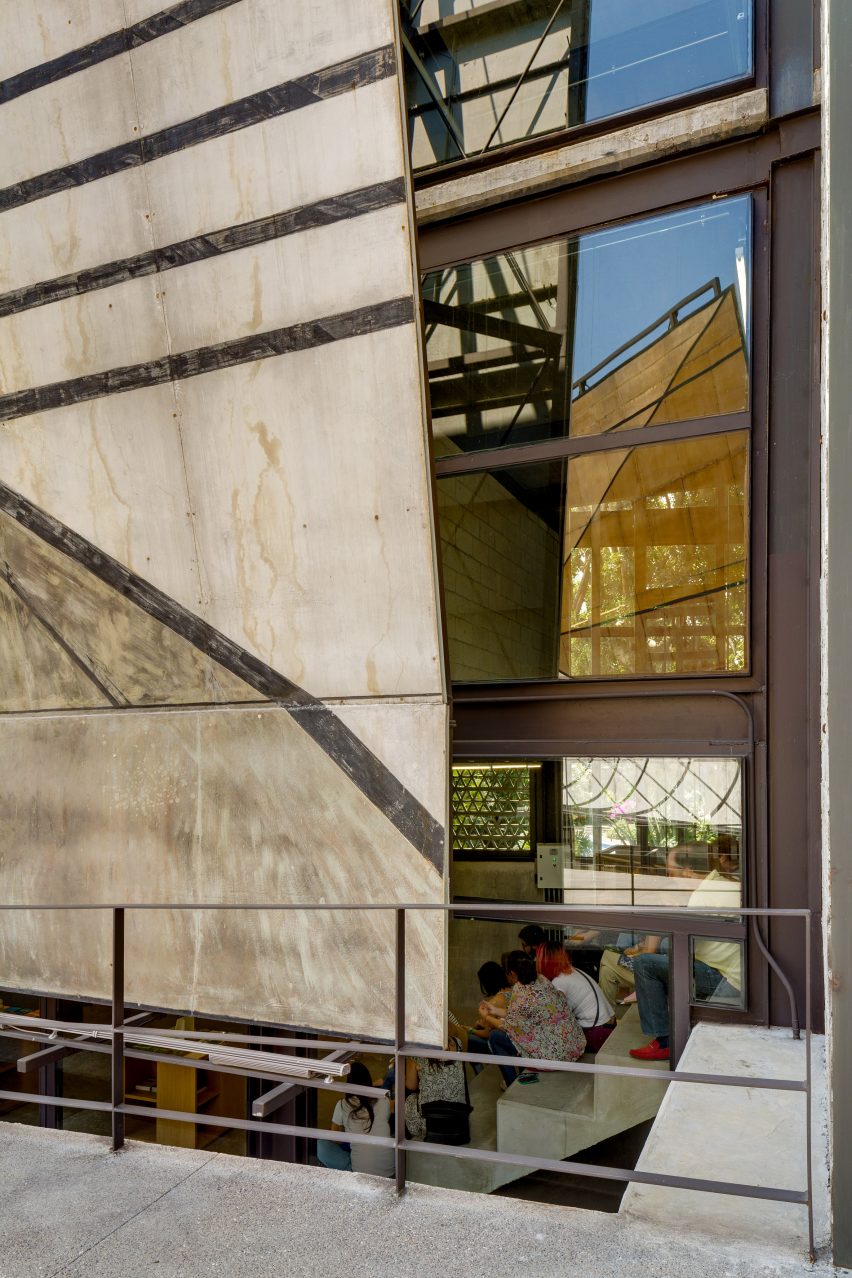
The two pieces by Siqueiros now stand either side of a new entrance, which is set into a feature wall made from perforated concrete blocks that wraps around all of the buildings in the complex.
"We had to do an envelope, some kind of new skin to give it a more institutional presence," explains Escobedo.
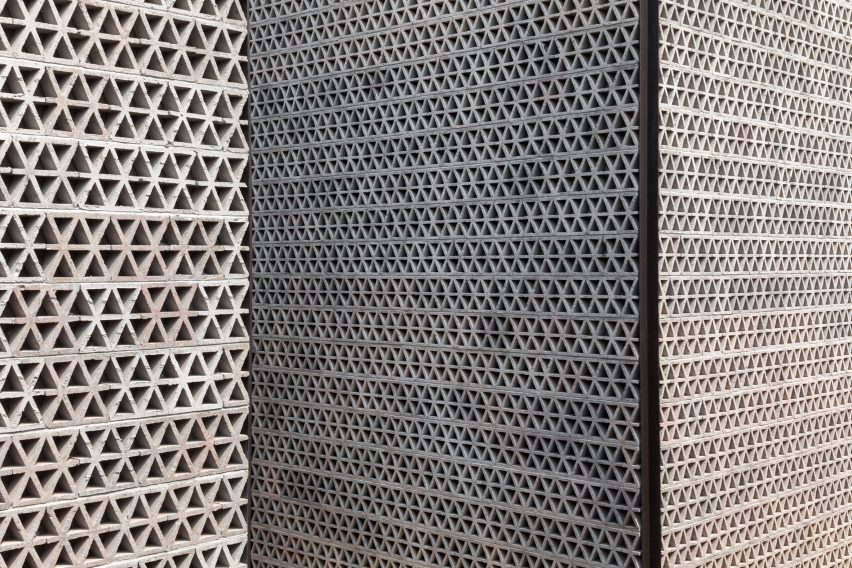
"We decided to use these concrete breeze blocks because its very common to have them in Mexico but especially in Cuernavaca," she adds.
The concrete blocks also offer a practical solution to the humid climate by allowing the building to breathe, while simultaneously enabling natural light to access the buildings.
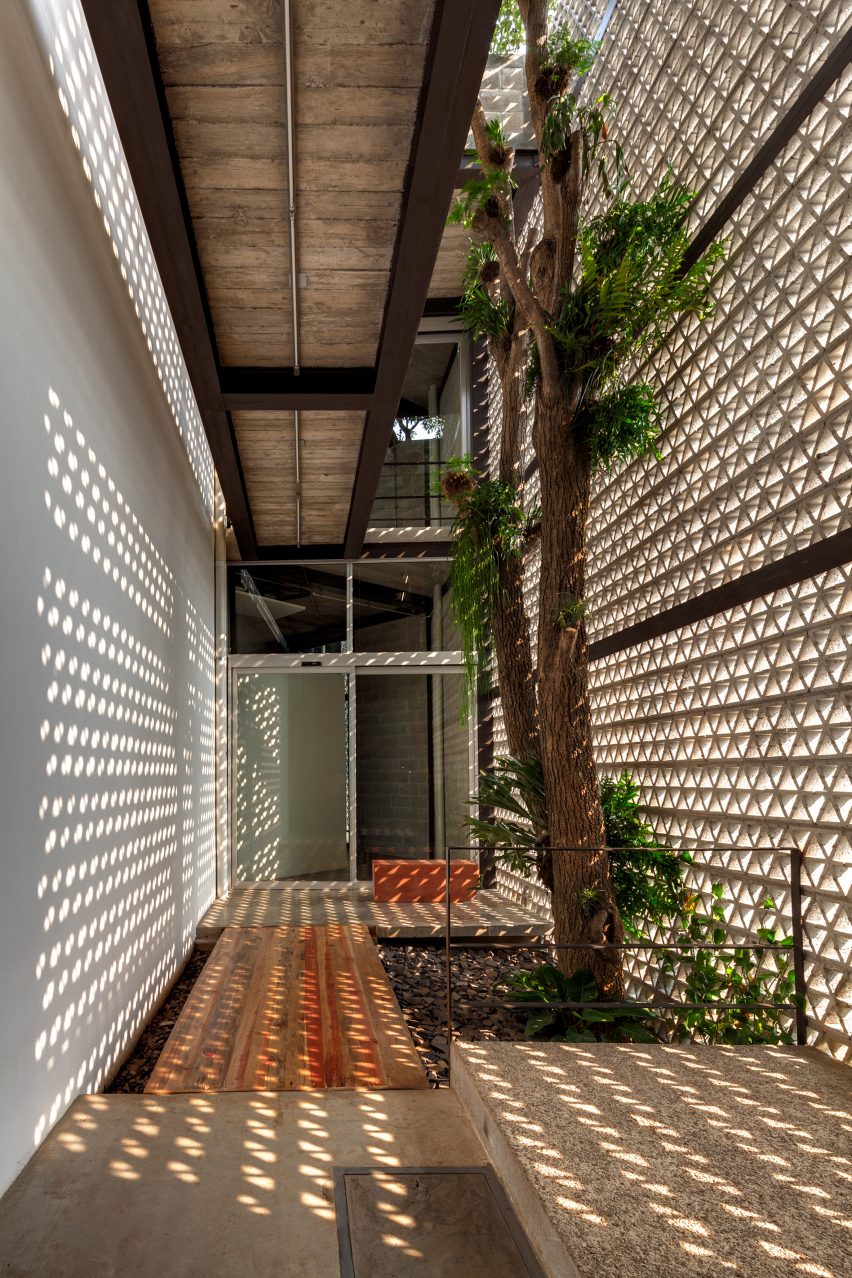
"We tried to use raw materials, not just because they're affordable but it became the strategy for the future," she said. "It's a public institution so we wanted to avoid it constantly being in need for painting and maintenance, so we just decided to use materials thats would age well."
La Tallera was completed in 2010 and is Escobedo's first public project.

Escobedo has continued to experiment with the form of the breeze block, integrating them several years later into her 2018 Serpentine Gallery pavilion.
The temporary structure, which is built in Kensington Gardens, London, on an annual basis, featured undulating concrete roof tiles that were stacked up to create an alternating pattern that referenced the traditional Mexican brick.
Escobedo is the youngest architect in the pavilion's history to have been commissioned for the project, and is also one of the judges for Dezeen Awards 2019.
Below is a transcript of the interview:
"La Tallera was my first public building. I did a competition in 2010, it was an invited competition, to renovate the former house and studio of David Alfaro Siqueiros, one of our most prominent muralists in Mexico.
"We were asked to design a brief that would incorporate the cafeteria, a bookshop, a reading room and other little elements that could activate the space in different ways. It was really about being very smart about the strategy because we had very little resources.
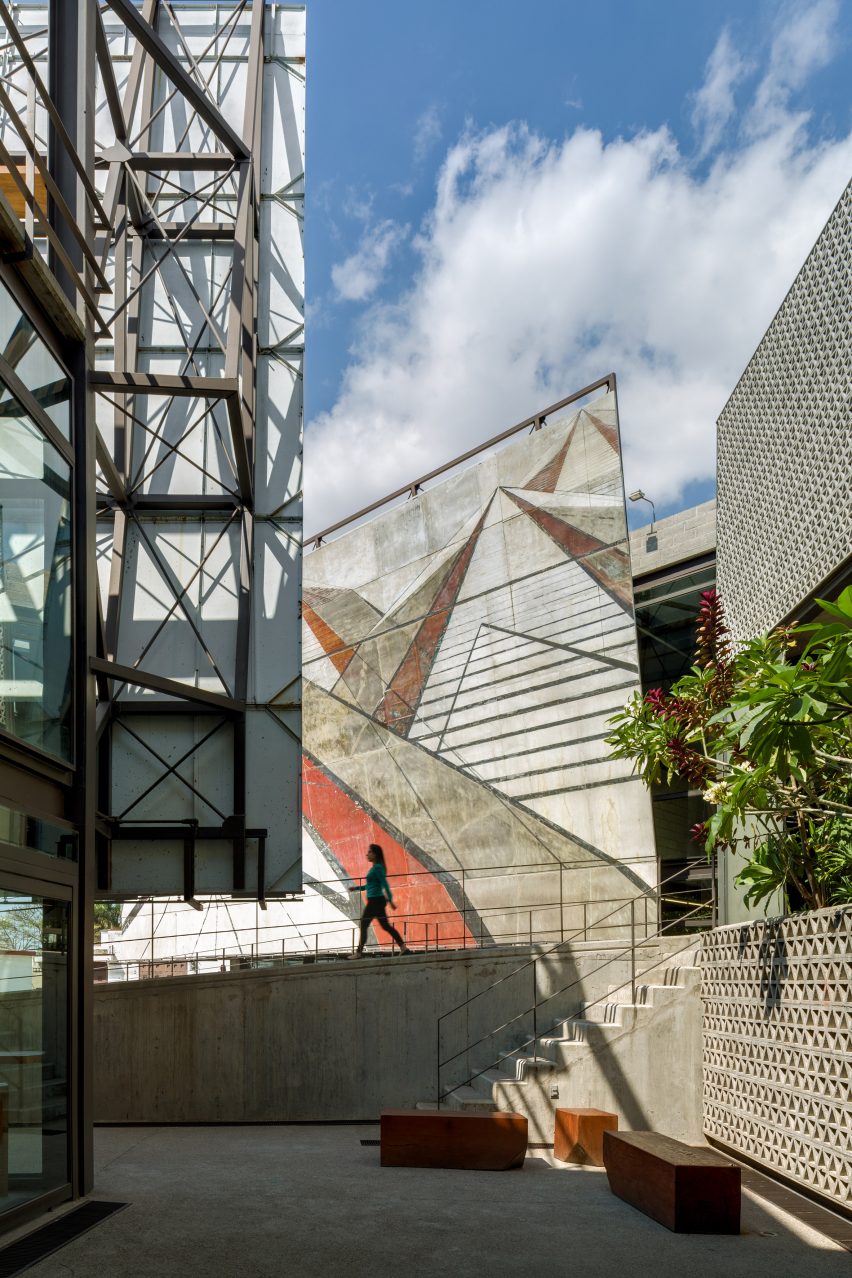
"The first thing that struck me was the courtyard where David Alfaro Siqueiros was painting his murals, it was really interesting to see how these monumental, public art pieces were inside the building. It was just about rotating it and opening the courtyard, so they could return to the original public art spirit and also create this plaza.
"The murals are so massive that they needed to be restructured, and within those structures we were able to do all the public programs, so it was about doing more with less.
"And then we had to do an envelope, some kind of new skin, to give it a more institutional presence. We decided to use these concrete breeze blocks. It's very common to have them in Mexico but especially in Cuernavaca, where La Tallera is situated.
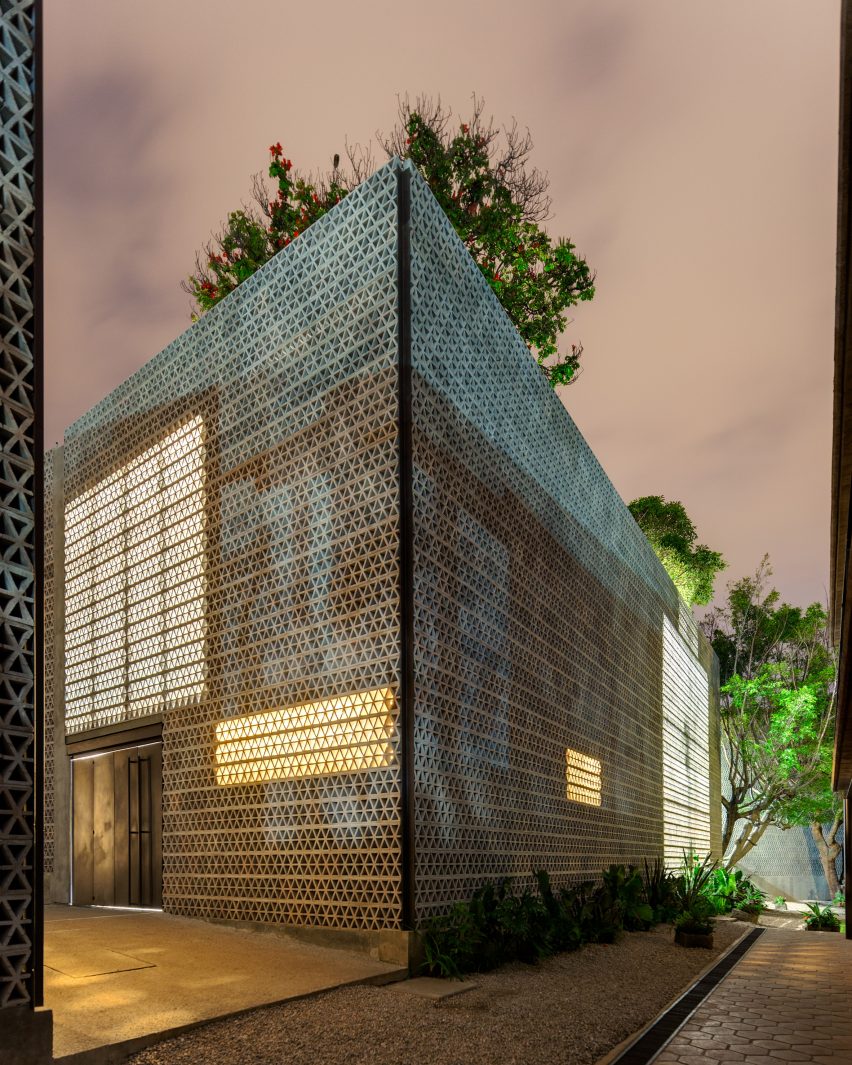
"It's really practical to use it because you have very warm and humid conditions, so its really nice to have something that breathes and allows the sun to come in, in a more filtered way.
"We try to use raw materials, not just because they're affordable but it became the strategy for the future. It's a public institution so we wanted to avoid it constantly being in need of painting and maintenance. We just decided to use materials thats would age well.
"It's very simple to see what was the addition and what was the original space because the original space is painted in white. And then you see the rest of the expansion of the building in raw materials."
Photography is by Rafael Gamo.